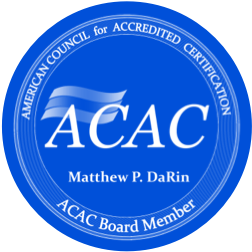Notice to New York State Residents:
There are many laws and regulations that vary by state and city associated with asbestos removal in residential and commercial buildings. Never remove a suspected or confirmed asbestos containing material without consulting a licensed asbestos professional who is familiar with the regulations applicable in your area.
Asbestos Exposure
Exposure to airborne asbestos can cause adverse health effects to the affected person. Continued exposure can increase the amount of asbestos fibers that remain in the lung. Fibers embedded in lung tissue over time may cause serious lung diseases including: asbestosis, lung cancer, or mesothelioma. Tobacco smokers who have been exposed to asbestos have a “far greater-than-additive” risk for lung cancer than do nonsmokers who have been exposed, meaning the risk is greater than the individual risks from asbestos and smoking added together.
Major repairs must be done only by a professional trained in methods for safely handling asbestos. Professionals should also do minor repairs since there is always a risk of exposure to fibers when asbestos is disturbed.
Doing minor repairs yourself is not recommended because improper handling of asbestos materials can create a hazard where none previously existed.
Major Health Effects
Asbestiosis Asbestosis is a serious, progressive, long-term non-cancer disease of the lungs
Lung Cancer Lung cancer is a malignant tumor that invades and obstructs the lung’s air passages. Cigarette smoking greatly increases the likelihood of a person developing lung cancer as the result of asbestos exposure.
Mesothelioma is a rare cancer which may affect the lining of the lings (plura) or the abdominal contents (peritoneum). Most mesotheliomas are caused by exposure to asbestos.
Gastrointestinal and Colorectal Cancers Studies of asbestos workers suggest that asbestos exposure might be associated with gastrointestinal (esophagus and stomach) and colorectal (colon and rectum) cancers. (No definitive link has been proven between Asbestos and non-respiratory cancers, however studies of Asbestos workers suggests a link)
Signs & Symptoms of Asbestos Exposure
- Shortness of breath (Primary Symptom)
- Persistent, Productive Cough (expels mucus)
- Chest pain, or tightness
- Loss of appetite
- Dry crackling noise in the lungs when inhaling
Sources of Asbestos Pollution
Many products that are n use today contain asbestos. Asbestos fibers are incredibly strong and have properties that make them resistant to heat. Most of these are materials used in heat and acoustic insulation, fireproofing, roofing and flooring. In 1989, EPA identified the following asbestos product categories. Many of these materials may still be in use.
- Pipe and Furnace Insulation
- Ceiling and floor tiles
- Decorative Sprays
- Shingles and siding, roofing felt
- Roof Coatings
- Commercial, industrial asbestos friction products
- Disc brake pads, drum brake lining, brake blocks
- Millboard
And more information can be found on the EPA’s List of Asbestos Sources
Asbestos Inspections, Analysis, Surveys
Pre-Demolition asbestos surveys
We identify the location, quantity and condition of all asbestos containing materials within the building and provide NYS DOL Code Rule 56 survey and reporting protocols. We perform a complete visual examination and the careful collection and lab analysis of samples. If asbestos is present, the inspector provides a written evaluation describing its location and extent of damage, and give recommendations for correction or prevention.
Hazardous Building Materials
Bluepoint can also locate and report the quantities and conditions of other hazardous building materials within a building such as PCB caulking materials, and other environmental and air quality hazardous materials.
Simple Solutions to Asbestos Pollution
- Don’t Panic
Asbestos is used in many household products, and generally will not release asbestos into the air unless disturbed. - Do not cut, rip, or sand asbestos-containing materials.
Ripping, cutting, or moving the materials can release the asbestos into the air. If the asbestos material is more than slightly damaged, or if you are going to make changes in your home that might disturb it, repair or removal by a professional is needed. - Call a professional asbestos contractor
Be certain the contractor has the appropriate accreditations, reputation, and equipment to conduct the tests. The EPA recommends sealing the materials if possible, rather than moving them.
More Information
For more information, or to request a professional asbestos consultation:



















